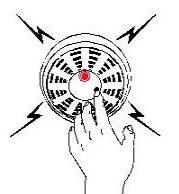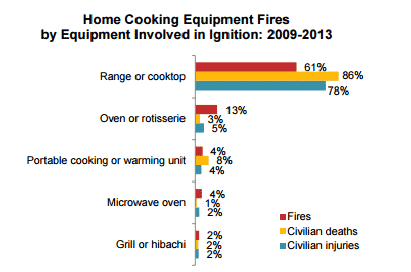Smoke Alarms in the home
Smoke alarms are a key part of a home fire escape plan and can save lives! When there is a fire, smoke spreads fast. Working smoke alarms give you early warning so you can get outside quickly. When one sounds, get outside and stay outside. Call the fire department from a neighbors house or cell phone.
Smoke alarms should be installed inside every bedroom, outside each sleeping area and on every level. Large homes may need extra smoke alarms. Roughly 2 out of 3 fire deaths happen in homes with no smoke alarms or the alarms are not working (data provided by NFPA). Test all smoke alarms once a month. If your smoke alarms take a 9-volt battery, change them when you change your clocks (twice a year). Don’t “borrow” a battery from a smoke alarm. Smoke alarms need to be replaced every 10 years.

Home Fire Escape Planning
If a fire breaks out in your home, you may have only a few minutes to get out safely. Everyone needs to know what to do and where to go if there is a fire. According to an NFPA survey, only 1 of every 3 American homes have actually developed and practiced a home fire escape plan.
MAKE an escape plan with your entire family by drawing a map using the escape planning grid showing all doors and windows. KNOW at least two ways out of every room and make sure all doors and windows leading outside for your escape route are clear of clutter and open easily. HAVE an outside meeting place (like a tree, light pole or mailbox) that is a safe distance from your home where everyone can meet. PRACTICE your home fire drill at night and during the day with everyone in your home, twice a year. Practice using different ways out as well. TEACH children how to escape on their own in case you can’t help or get to them. CLOSE doors behind you as you leave (if you can).
1/3 of American households who made an estimate thought they would have at least 6 minutes before a fire in their home would become life-threatening. The time available is often less. Only 8% said their first thought of hearing a smoke alarm would be to get out. So talk to and practice with your family so everyone can be safe in the event of a fire.
Cooking Safety
Cooking brings family and friends together and can be relaxing. But did you know that cooking fires are the number 1 cause of home fires and home injuries? Being mindful while you cook can go a long way to help prevent a fire.
COOK WITH CAUTION! Be on alert when cooking. Stay in the kitchen while you are frying, grilling or boiling food. If you are simmering, baking, roasting or boiling food, check it regularly, remain in the home while food is cooking and use a timer to remind yourself that you are cooking. Keep anything that can catch fire – oven mitts, wooden utensils, food packaging, towel or curtains – away from your stovetop. You should also have a “kid-free zone” of at least 3 feet around the stove and are3as where hot food or drink is prepared.
IF YOU HAVE A COOKING FIRE…JUST GET OUT! When you leave, close the door behind you whenever possible to help contain the fire. Call 9-1-1 after you leave. If you try to fight the fire, be sure others are getting out and you have a clear way out. Keep a lid nearby when you’re cooking to smother small grease fires (NEVER put water on a grease fire). Smother the fire by sliding the lid over the pan and turn off the stovetop. Leave pan covered until it is completed cooled. If you have an oven fire, turn off the heat and keep the door closed.

Electrical Safety
Electricity makes our lives easier and using it is second nature to most of us. However, we need to be cautious and keep safety in mind.
Some safety tips to consider:
Have all electrical work done by a qualified technician
Only plug one heat-producing appliance (such as a coffee maker, toaster, space heater, etc) into a receptacle outlet at a time
Major appliances (refrigerators, stoves, washers, dryers, air conditioners, etc) should be plugged directly into a wall receptacle outlet. DO NOT use extension cords or plug strips for these.
Check electrical cords to make sure they are not running across doorways or under carpets. Extension cords are intended for temporary use, not permanent use.
Avoid overloading outlets.
Place lamps on level surfaces, away from things that can burn.
Use light bulbs that match the recommended wattage on the lamp or fixture. There should be a sticker that indicates the maximum wattage light bulb to use.
In homes with small children, make sure your home has tamper-resistant (TR) receptacles.
Use ground fault circuit interrupters (GFCIs) to reduce the risk of shock. GFCIs shut off an electrical circuit when it becomes a shock hazard. They should be installed inside the home in bathrooms, kitchens, garages and basements. All outdoor receptacle outlets should be GFCI protected as well.
Arc fault circuit interrupters (AFCIs) are a kind of circuit breaker that shuts off electricity when a dangerous condition occurs.
Test AFCIs and GFCIs once a month to make sure they are working properly.
Call a qualified electrician or your landlord if you have or find the following:
Frequent problems with blowing fuses or tripping circuit breakers
A tingling feeling when you touch an electrical appliance
Discolored or warm wall outlets
A burning or rubbery smell coming from an appliance
Flickering or dimming lights
Sparks from an outlet
